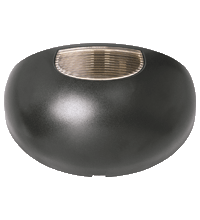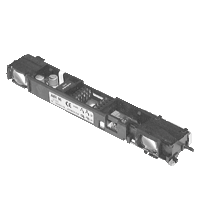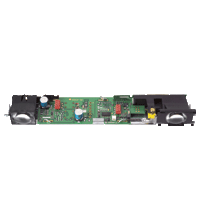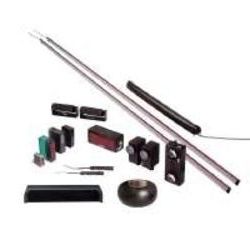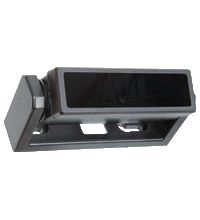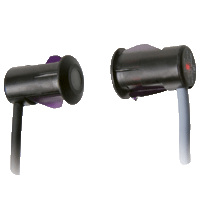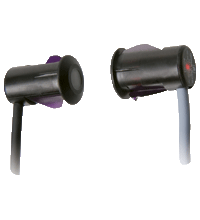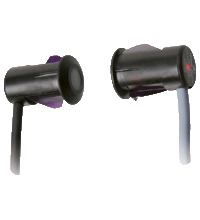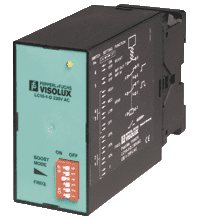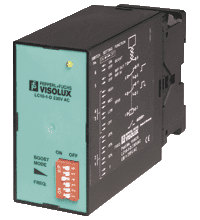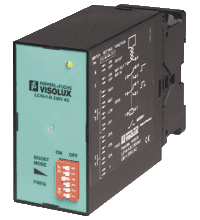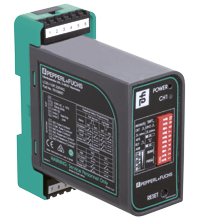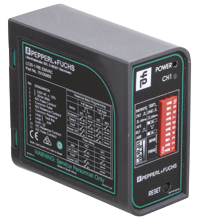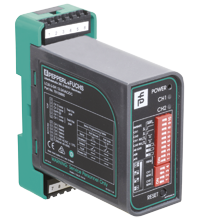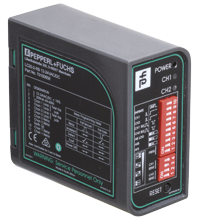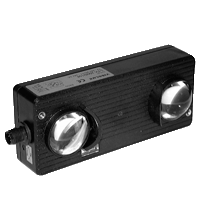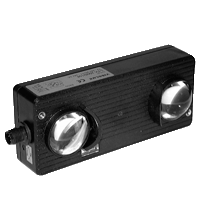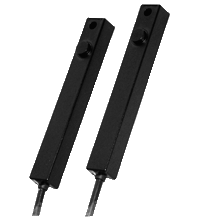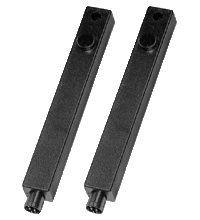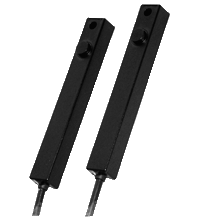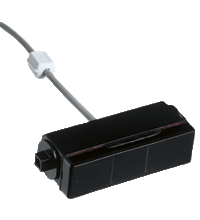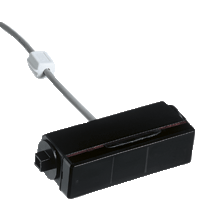Pepperl+Fuchs Sensors for Automated Accesses
Microwave motion sensor with intelligent functions
- Sensor module for configurable Topscan switch
- Sensor module for configurable TopScan-S
- Master module
- Category 2, tested and certified to DIN 18650/EN 16005
- Safe function even on difficult floors
- Easy adjustment of transmitter for hinge side/ opposite hinge side
- Sensor module for configurable TopScan-S
- Slave module
- Category 2, tested and certified to DIN 18650/EN 16005
- Safe function even on difficult floors
- Easy adjustment of transmitter for hinge side/ opposite hinge side
- Single-beam light scanner
- Can be used to monitor both main and ancillary closing edges
- Closing edge safety on revolving doors and carousel doors
- Accurate beam alignment thanks to finely bundled light beam
- Background suppression operating mode: ignores objects outside the sensing range
- Single-beam light scanner
- Can be used to monitor both main and ancillary closing edges
- Closing edge safety on revolving doors and carousel doors
- Accurate beam alignment thanks to finely bundled light beam
- Background evaluation operating mode: uses the background as a reference for detecting difficult objects
- Single-beam miniature photoelectric sensor, ideal for installing in frames or contours
- Integrated circuit
- Plug-in style housing for 13 mm hole
- Dark on version
- Single-beam miniature photoelectric sensor, ideal for installing in frames or contours
- Integrated circuit
- Plug-in style housing for 13 mm hole
- Narrow opening angle, suitable for mounting in pairs
- Various frequencies for avoiding mutual interference (cross-talk immunity)
- Light on version
- Single-beam miniature photoelectric sensor, ideal for installing in frames or contours
- Integrated circuit
- Plug-in style housing for 13 mm hole
- Narrow opening angle, suitable for mounting in pairs
- Various frequencies for avoiding mutual interference (cross-talk immunity)
- Light on version
- Single-beam miniature photoelectric sensor, ideal for installing in frames or contours
- Integrated circuit
- Plug-in style housing for 13 mm hole
- Narrow opening angle, suitable for mounting in pairs
- Light on version
- Version with test input
- Sensor system for vehicle detection
- Complete control interface for inductive loops laid beneath the surface
- Reliable detection with long service life
- Various operating modes available
- Boost function for increasing sensitivity
- Test function
- Version with 1 loop channel
- Sensor system for vehicle detection
- Complete control interface for inductive loops laid beneath the surface
- Reliable detection with long service life
- Various operating modes available
- Boost function for increasing sensitivity
- Test function
- Version with 1 loop channel
- Sensor system for vehicle detection
- Complete control interface for inductive loops laid beneath the surface
- Reliable detection with long service life
- Various operating modes available
- Boost function for increasing sensitivity
- Test function
- Version with 1 loop channel
- Sensor system for vehicle detection
- Complete control interface for inductive loops laid beneath the surface
- Reliable detection with long service life
- Boost function for increasing sensitivity
- Test function
- Version with 2 loop channels
- Version with direction detection
- Sensor system for vehicle detection
- Complete control interface for inductive loops laid beneath the surface
- Reliable detection with long service life
- Various operating modes available
- Boost function for increasing sensitivity
- Test function
- Version with 1 loop channel
- Sensor system for vehicle detection
- Complete control interface for inductive loops laid beneath the surface
- Reliable detection with long service life
- Various operating modes available
- Boost function for increasing sensitivity
- Test function
- Version with 1 loop channel
- Sensor system for vehicle detection
- Complete control interface for inductive loops laid beneath the surface
- Reliable detection with long service life
- Boost function for increasing sensitivity
- Test function
- Version with 2 loop channels
- Version with direction detection
- Sensor system for vehicle detection
- Complete control interface for inductive loops laid beneath the surface
- Reliable detection with long service life
- Boost function for increasing sensitivity
- Test function
- Version with 2 loop channels
- Version with direction detection
- Compact, easy-to-operate Bluetooth device
- Generation of a full installation report in case of site sign-off
- Performance checks on loop and installation
- Compatible with all LC20 loop detectors
- Operating range of up to 17 m
- Diagnostics via app with integrated diagnostic tools
- Mode selectable: background suppression or evaluation
- Mechanical adjustable detection range
- Adjustable timer functions
- DC voltage version
- Version with test input
- Mode selectable: background suppression or evaluation
- Mechanical adjustable detection range
- Adjustable timer functions
- DC voltage version
- Version with test input
- Single-beam monitoring with extremely narrow sensor
- Integrated circuit
- Test
- Simple installation - Plug Play
- Ideal for installation in door profiles or frames
- Light on version
- Single-beam monitoring with extremely narrow sensor
- Integrated circuit
- Test
- Simple installation - Plug Play
- Ideal for installation in door profiles or frames
- Dark on version
- Single-beam monitoring with extremely narrow sensor
- Integrated circuit
- Test
- Simple installation - Plug Play
- Ideal for installation in door profiles or frames
- Dark on version
- Single-beam monitoring with extremely narrow sensor
- Integrated circuit
- Test
- Simple installation - Plug Play
- Ideal for installation in door profiles or frames
- Version with Certification in accordance with railway standard EN50155
- Version with E1 approval
- Fan-shaped detection field with up to 12 beams
- Adjustable detection fields for different door widths
- Automatic drift compensation
- Version with E1 approval
- Fan-shaped detection field with up to 12 beams
- Adjustable detection fields for different door widths
- Automatic drift compensation
- Version with test input
Technical Specifications and Features of Sensors for Automated Accesses
Pepperl+Fuchs provides convenient and safe control of doors and gates with special sensor technology. Opening automatic doors, monitoring and turning on escalators or moving walks, detecting the approach of people or vehicles - all this is included in the functionality of technical specifications of Pepperl+Fuchs access sensors. Using various sensor technologies, the company offers manufacturers and users the widest range of powerful sensors including proximity, photoelectric, and ultrasonic ones. At the same time, they screw up with a wide range of features.
- RFID technology. Pepperl+Fuchs provides Radio-Frequency Identification (RFID) solutions. RFID technology is often used in access control systems to identify and track objects or individuals.
- Safety sensors. For automated accesses, safety is a crucial consideration. Pepperl+Fuchs offers safety sensors and systems that can be integrated into access control systems to ensure safe and secure operation.
- Communication protocols. Pepperl+Fuchs sensors are designed to work with various communication protocols, such as IO-Link, which allows for seamless integration into industrial automation networks.
- Robust design. Sensors for automated accesses often need to withstand harsh industrial environments. Pepperl+Fuchs sensors are typically designed to be rugged and durable, suitable for challenging conditions.
Applications in Automated Access Control
Pepperl+Fuchs sensors for automated accesses and entrances have a wide range of applications, which we will discuss below.
Industrial doors
Fast door activation using hybrid directional radar and infrared sensors. Underground induction loops with single or double coils for reliable detection of industrial vehicles. Especially for small and large industrial gates, overhead doors, high-speed gates, etc. Employees and goods are always protected in and around the gate-closing area!
Elevators
Light curtains provide access to people without closing the door. Before entering the elevator, precisely adjusted door sensors ensure that the doors only open and close when people are nearby.
Gates & fences
Vehicles must be correctly detected and controlled to ensure good access to gates and other barriers. Various options are available for this if desired.
Revolving doors
Detection sensors for revolving doors make buildings more accessible and protect the most vulnerable members of society.
Escalators
Pepperl+Fuchs automated access control sensors allow escalators to be discreetly activated when people come within a specified proximity.
Barriers
Barriers are used to allow vehicles to enter or not enter. To do this, you need to detect cars. In this way, vehicles can enter reliably, but damage to the barrier that closes too early can also be prevented. Possible solutions include underground induction coils, ultrasonic distance sensors, and safety barriers.
Swing doors
To automate swing doors and detect pedestrians, installing door sensors on top of the doorway is possible. For a more controlled solution, there is the option of door switches that can be operated with the press of a button, completely contactless. This makes swing doors not only more efficient but also more accessible, for example, for wheelchairs.
Sliding doors
Pepperl+Fuchs sensors are designed for the convenient and timely opening of sliding doors and, at the same time, maximum safety for pedestrians.
Hangar doors
Large hangars and large doors: ensuring control and early detection are critical. Vehicles such as planes, cars, and people can be detected so that doors can open and close correctly.
Installation and Configuration Guidelines
Let's look at Pepperl+Fuchs sensor installation tips and configuration advice.
Understand the sensor type
Pepperl+Fuchs offers various sensors for different applications. Make sure you have the right type of sensor for your specific use case, such as photoelectric sensors, ultrasonic sensors, or RFID sensors.
Review documentation
Read the product documentation thoroughly. This includes the user manual, datasheet, and any installation guides provided by Pepperl+Fuchs. This information will guide you through the installation and configuration process.
Mounting and placement
Follow the guidelines for mounting the sensors. Proper placement is crucial for the sensor to detect objects or individuals accurately. Consider factors such as height, angle, and distance according to the specifications provided.
Wiring and power supply
Connect the sensor to the power supply according to the specifications outlined in the documentation. Ensure proper wiring to prevent electrical issues. Pay attention to factors like voltage requirements and cable lengths.
Sensor calibration
Pepperl Fuchs sensors for automated accesses require calibration to optimize performance. Follow the calibration procedures outlined in the documentation. This may involve adjusting sensitivity, range, or other parameters.
Interface configuration
If the sensor interfaces with other devices or systems configure the necessary settings. This might involve setting communication protocols and addressing, or configuring parameters for integration with your access control system.
Testing
After installation and configuration, perform thorough testing to ensure the sensors are working as expected. This includes checking detection accuracy, response times, and integration with other systems.
Maintenance and troubleshooting
Familiarize yourself with maintenance procedures and troubleshooting steps. Regular maintenance can prevent issues, and knowing how to troubleshoot is essential for quick resolution in case of problems.
Compliance
Ensure that the installation and configuration comply with relevant safety standards or regulations in your industry or region.
Documentation
Keep detailed records of the installation and configuration process. Document any changes made and keep a copy of the user manual and technical specifications for future reference.
Selecting the Right Sensor for Your Access Automation Needs
When selecting the right Pepperl+Fuchs access sensors for your needs, consider the following factors.
Type of access automation
Identify the specific access automation application you are working on, whether it's a door, gate, or barrier system.
Technology
Pepperl+Fuchs offers a variety of sensor technologies, including ultrasonic, inductive, capacitive, and photoelectric sensors. Choose the technology that best suits your application. For example, photoelectric sensors may be suitable for detecting the presence of objects, while ultrasonic sensors can be used for distance measurement.
Environment
Consider the environmental conditions in which the sensor will operate. Factors such as temperature, humidity, and exposure to harsh chemicals or outdoor elements can impact sensor performance. Pepperl+Fuchs provides sensors with different protection ratings to handle various environmental conditions.
Mounting and installation
Evaluate the mounting options and installation requirements for the sensor. Ensure that the sensor can be easily integrated into your access automation system and that it can be mounted securely in the desired location.
Range and detection distance
Determine the required range or detection distance for the sensor based on your application. Pepperl+Fuchs sensors come in various models with different detection ranges, so choose one that aligns with your specific needs.
Output type
Consider the type of output signal required for your automation system. Pepperl+Fuchs sensors typically provide different output options, such as NPN, PNP, or analog signals. Ensure compatibility with your control system.
Reliability and durability
Look for sensors that are known for their reliability and durability. In industrial settings, it's crucial that sensors can withstand the demands of continuous operation and potential exposure to challenging conditions.
Integration with control systems
Check for compatibility with your existing or planned control systems. Pepperl+Fuchs sensors are designed to integrate with various automation and control systems, but it's essential to verify compatibility.
Power requirements
Consider the power requirements of the sensor and ensure that your system can provide the necessary power supply. Some sensors may operate on low voltage, while others require higher voltage levels.
